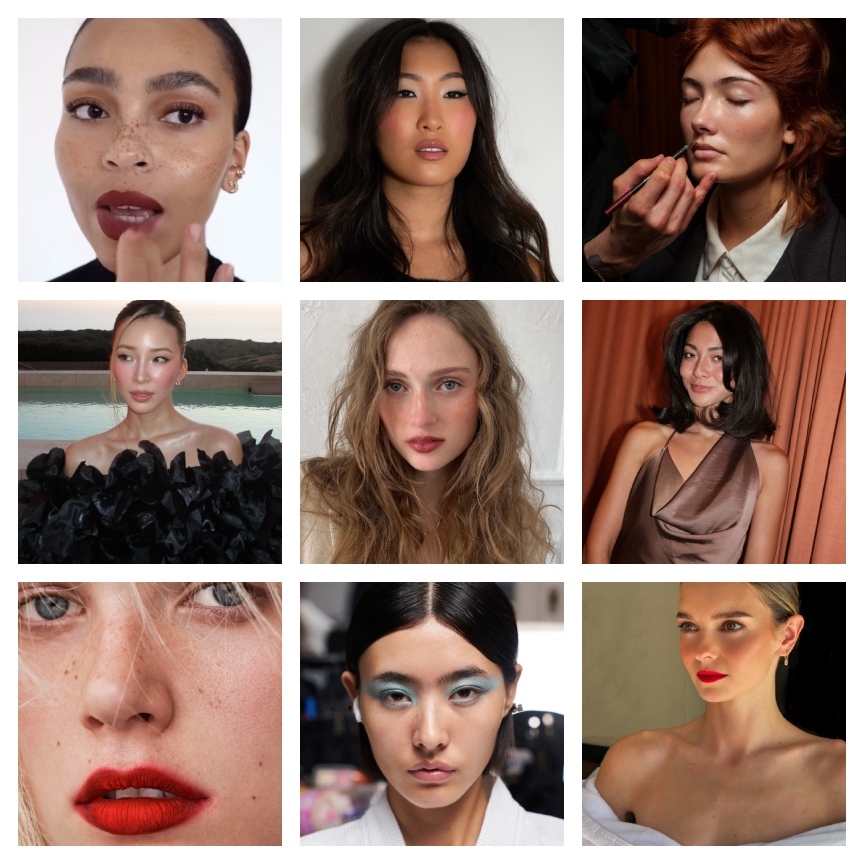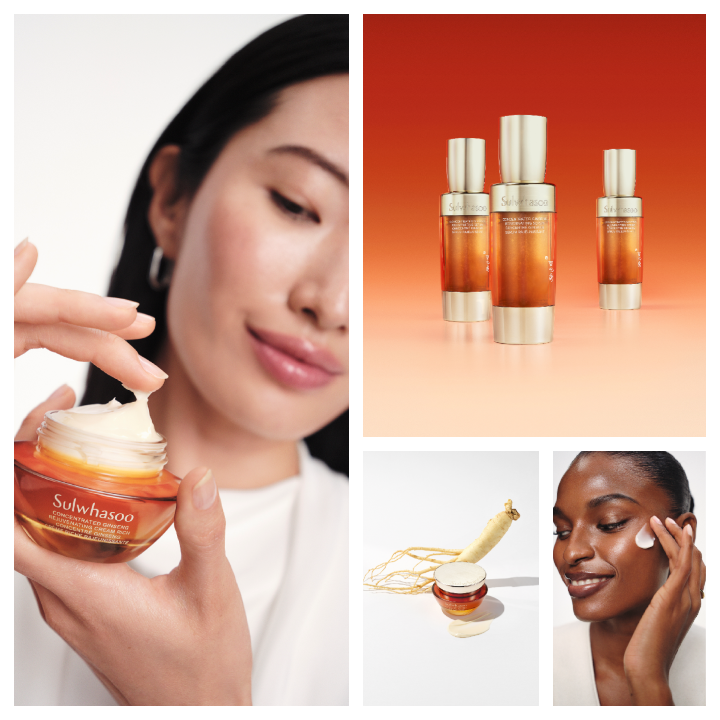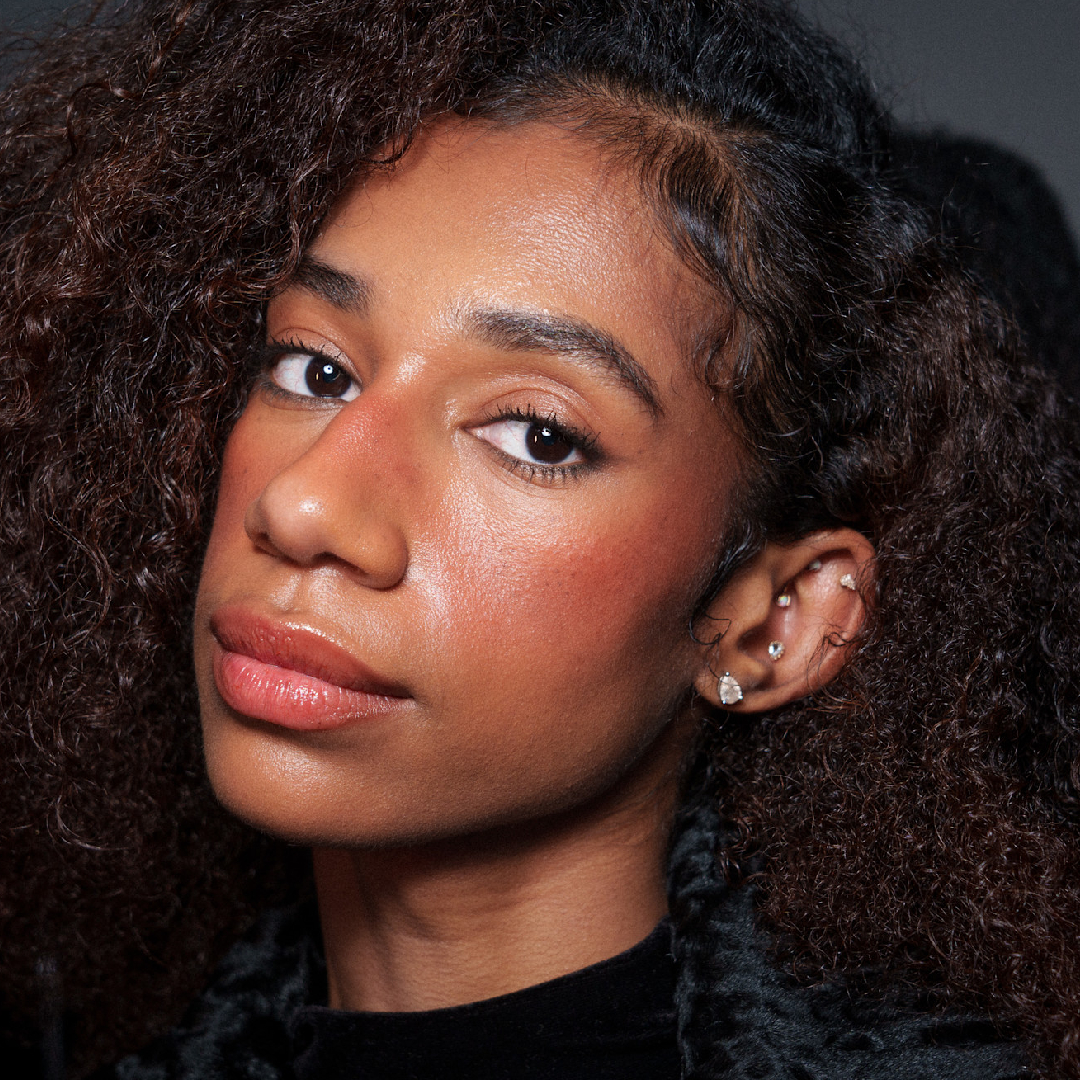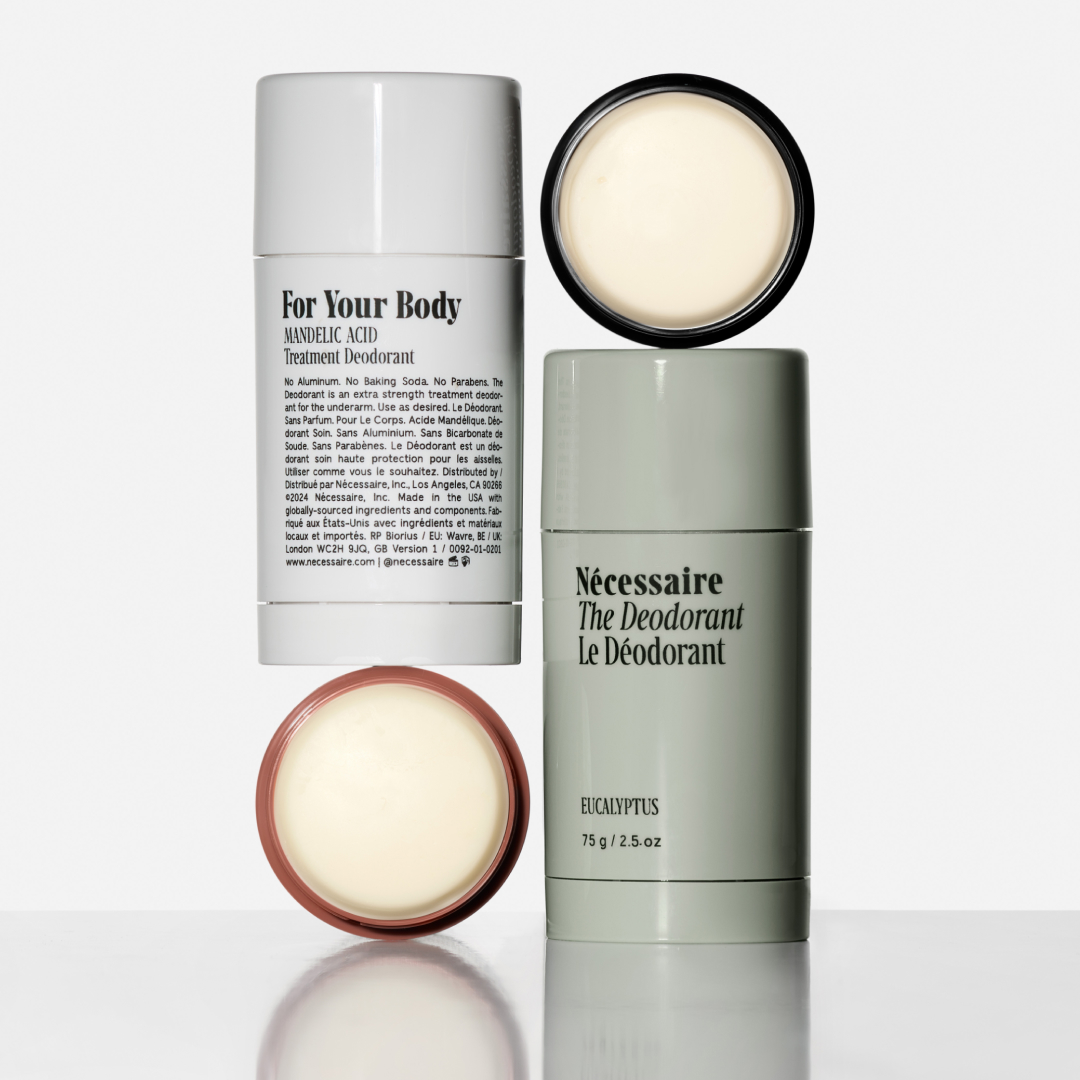At-Home Dermaplaning Is a Dermatologist-Approved Shortcut to Smooth, Glowy Skin
Bye bye, peach fuzz.


Gabrielle Ulubay
Once upon a time, dermaplaning (aka the process of shaving peach fuzz off the face) was a cosmetic procedure reserved for professionals. You would book an appointment with your dermatologist or at a spa and lay still while a trained expert took a scalpel to your skin. Now that at-home dermaplaning tools have become more popular over the past few years, it’s possible, easy, and safe to get the same skin-smoothing, glow-boosting results from the comfort of your bathroom.
Of course, facial hair removal is not something you need to do, and having facial hair is completely natural. "Facial hair, from a biological perspective, protected against the elements, helping to shield the skin from sun exposure and reduce the risk of sunburns," says board-certified dermatologist Divya Shokeen, M.D. FAAD. In some ways, it's even beneficial: hair can trap dust and allergens before they enter the respiratory system, offering a form of filtration.
Removing facial hair, however, is a dermatologist-approved treatment that coincides with skin-smoothing benefits, so long as it's done safely. Keep reading to ensure you have all the facts straight and proper tools before picking up a blade. Dr. Shokeen, fellow dermatologist Joyce Park, M.D. FAAD, and @teawithmd on TikTok, and celebrity aesthetician Kristin Gunn break down everything you need to know—and disprove a handful of dermaplaning myths. (For more hair removal content, read Marie Claire's guides to at-home laser hair removal, the best razors, and the best epilators.)
What Is Dermaplaning?
“The concept behind dermaplaning is simple,” says Dr. Park. “It involves taking a scalpel and running it lightly across the skin's surface to act as an exfoliant and remove dead skin and baby hairs, aka peach fuzz.” The little hairs, which are technically called vellus hairs, will clump together as you shave them away. It’s oddly satisfying, FYI. This procedure can be done in a professional setting, but dozens of at-home tools can help you achieve the same results.
A post shared by StackedSkincare®
A photo posted by on
How Do I Do At-Home Dermaplaning?
Pick a Reputable Product
Dr. Shokeen says that when you're dermaplaning at home, you should "look for dermaplaning tools specifically designed for at-home use, which typically feature a safety guard to help minimize the risk of cuts." She adds that it's best to use products from reputable, established skincare brands—I recommend the Dermaflash Luxe—and to follow the instructions on the packaging exactly.
Wash Your Face
Stay In The Know
Get exclusive access to fashion and beauty trends, hot-off-the-press celebrity news, and more.
Once you're ready to go, wash your face with one of the best face washes. "Always start with freshly cleansed skin. This helps to prevent the spread of any bacteria that can cause acne," says Gunn. "Let the skin air dry as well. It’s much harder to dermaplane moist skin."
Shave Away
Gunn suggests pulling the skin upwards with the tool at a 45-degree angle. Use gentle, light, short strokes to remove hair. She warns, "Too much pressure can cause sensitivities, so stay light and feathery." Start in the ear area, and work down toward the jawline and inwards toward the cheek, saving the brow area for last.
She adds that you can also dermaplane your neck, but says to wait until you're more experienced first (and to patch test), as this area is thinner and more sensitive than the face. (Editor's note: Avoid dermaplaning over active acne breakouts.)
What Are the Benefits of Dermaplaning?
The benefits of dermaplaning are largely cosmetic. “Dermaplaning is said to make the skin appear brighter, make makeup go on smoother, and help skincare products penetrate more deeply,” explains Dr. Park. This is because dermaplaning creates a smoother, hairless surface, it allows makeup to sit more evenly across the skin, adds Dr. Shokeen
Gunn even compares the effects of dermaplaning to "what sanding a wall does prior to painting." To keep these benefits in the long run, you’ll need to do a fair amount of upkeep. For best results, dermaplaning should be done once per month.
A post shared by nina vee (@ninavee)
A photo posted by on
Is At-Home Dermaplaning Safe?
The short answer: Yes. But to avoid cutting yourself or getting an infection, make sure to follow instructions and use one of the best at-home dermaplaning tools. “It’s safe to do at home as long as you have the right tools and you use a safe technique,” agrees Dr. Park. She also says to make sure your tool is disinfected (cleaning instructions will differ depending on your device), and wear plastic gloves during the process.
Dr. Shokeen warns that using sharp blades close to the skin poses a risk of cuts, nicks, and irritation. Ensuring that tools are clean and sterile is crucial to prevent infections. During the process, remember that nothing should feel painful or uncomfortable—if it does, take it as a sign to stop.
Once you’re done shaving your face, make sure to follow up with a fragrance-free moisturizer for sensitive skin, as fragrances can irritate freshly shaved skin.
Can All Skin Types Dermaplane?
While dermaplaning is generally safe for all skin types, those with active acne should take extra caution. “Dermaplaning helps to get rid of dead skin cells by lightly exfoliating the skin, which actually can be beneficial for acne,” says Dr. Park. “But—and this is a big but—if you have inflamed cystic or pustular acne lesions, wounds, or openings in the skin, do not dermaplane over them because the bacteria can get spread by the blade.” Anyone with a rash, cut, cysts, or open wounds should avoid dermaplaning as well.
A post shared by THE SKINNY CONFIDENTIAL
A photo posted by on
Will My Hair Grow Back Thicker After Dermaplaning?
It’s time for some myth-busting: shaving your peach fuzz is not going to make your hair grow back thicker or fuller—it’s a common misconception. Dr. Park explains that your hair density is mainly determined by hormones and genetics.
"Your hair follicle sits deep under the skin," adds Gunn. "When you shave, you aren’t altering the follicle at all." This means your hair will grow at the same rate, width, and texture. No evidence supports that dermaplaning can cause a textural change to hair regrowth. With that in mind, your hair may feel thicker because it’s growing back at an angle with a blunt edge.
Why Trust Marie Claire
Samantha Holender is the Senior Beauty Editor at Marie Claire and has nearly a decade of experience in the beauty industry. She keeps a pulse on the newest, safest innovations in aesthetics and attended the 2024 American Academy of Dermatology Conference. She also spoke with three board-certified dermatologists to evaluate how to dermaplane at-home safely.
Marie Claire is also an expert in at-home beauty treatments, having written about at-home keratin treatments, at-home microcurrent devices, and at-home LED masks.
Meet the Experts

Dr. Divya Shokeen is a board-certified dermatologist. She has published a number of peer-reviewed articles on dermatology and dermatologic surgery, and is a member of the American Academy of Dermatology (AAD), American Society of Dermatologic Surgery (ASDS), and Women’s Dermatology Society (WDS). She is currently based in Southern California.

Dr. Joyce Park is a board-certified dermatologist and content creator. She is also the founder of Skin Refinery, a virtual dermatology clinic. Trained at Stanford and NYU, she is currently based in Washington.

Kristin Gunn is a celebrity aesthetician and founder of Beaux Medspa. She specializes in skincare, with special attention to anti-aging. Licensed in Colorado, New York, and Texas, she is currently based in Austin.

Samantha Holender is the Senior Beauty Editor at Marie Claire, where she reports on the best new launches, dives into the science behind skincare, and shares the breakdown on the latest and greatest trends in the beauty space. She's studied up on every ingredient you'll find on INCI list and is constantly in search of the world's glowiest makeup products. She's constantly tracking the biggest nail and hair trends to pop up in the beauty space, going backstage during fashion weeks, tracking celebrity looks, and constantly talking to celebrity hair stylists, nail artists, and makeup artists. Prior to joining the team, she worked as Us Weekly’s Beauty and Style Editor, where she stayed on the pulse of pop culture and broke down celebrity beauty routines, hair transformations, and red carpet looks. Her words have also appeared on Popsugar, Makeup.com, Skincare.com, Delish.com, and Philadelphia Wedding. Samantha also serves as a board member for the American Society of Magazine Editors (ASME). She first joined the organization in 2018, when she worked as an editorial intern at Food Network Magazine and Pioneer Woman Magazine. Samantha has a degree in Journalism and Mass Communications from The George Washington University’s School of Media and Public Affairs. While at GWU, she was a founding member of the school’s HerCampus chapter and served as its President for four years. When she’s not deep in the beauty closet or swatching eyeshadows, you can find her obsessing over Real Housewives and all things Bravo. Keep up with her on Instagram @samholender.
- Gabrielle UlubayBeauty Writer
-
 My Only Summer Goal Is to Smell Like Diane Keaton's Garden
My Only Summer Goal Is to Smell Like Diane Keaton's GardenThanks to a fruity new fragrance trend, it's fully possible.
By Ariel Baker Published
-
 Kendall Jenner Gives an All-Time Basic the Coachella Treatment
Kendall Jenner Gives an All-Time Basic the Coachella TreatmentShe's going back to her roots.
By Kelsey Stiegman Published
-
 We Taste-Tested Meghan Markle’s As Ever Jam, Honey and Flower Sprinkles
We Taste-Tested Meghan Markle’s As Ever Jam, Honey and Flower SprinklesWomen across America gave 'Marie Claire' their thoughts on the Duchess of Sussex's first seasonal drop of products.
By Kristin Contino Published
-
 Everything You Need to Know About Marie Claire’s Skin and Hair Awards
Everything You Need to Know About Marie Claire’s Skin and Hair AwardsCould your brand survive an editor testing session?
By Ariel Baker Published
-
 People Always Compliment My Flawless Skin—These 6 Steps Are Why
People Always Compliment My Flawless Skin—These 6 Steps Are WhyFrom sunscreen and essences to moisturizers, it's all here.
By Hannah Baxter Published
-
 The 11 Best Spring Makeup Trends Are Sexy, Sensual, and Perfectly Luminous
The 11 Best Spring Makeup Trends Are Sexy, Sensual, and Perfectly LuminousIt's dew or die time.
By Jamie Wilson Published
-
 Simone Ashley’s Indie Sleaze Glam Is a Cool-Toned Dream
Simone Ashley’s Indie Sleaze Glam Is a Cool-Toned DreamThe actor was spotted in New York City looking like the epitome of cool-toned beauty.
By Ariel Baker Published
-
 Sulwhasoo’s New Concentrated Ginseng Cream Is a Wrinkle-Erasing Time Machine for My Skin
Sulwhasoo’s New Concentrated Ginseng Cream Is a Wrinkle-Erasing Time Machine for My SkinThis Seoul-based brand is the key to plump skin.
By Samantha Holender Published
-
 The 10 Best Hair Growth Shampoos of 2025, Tested by Editors
The 10 Best Hair Growth Shampoos of 2025, Tested by EditorsExpensive and healthy-looking hair on lock.
By Marisa Petrarca Published
-
 New York Fashion Week’s Fall/Winter 2025 Best Beauty Moments Are a Lesson in Juxtaposition
New York Fashion Week’s Fall/Winter 2025 Best Beauty Moments Are a Lesson in JuxtapositionThe week's best beauty looks were a maximalism master class.
By Ariel Baker Published
-
 Nécessaire's Extra-Strength Deodorant Outlasts an Editor's Sweatiest Test: Fashion Week
Nécessaire's Extra-Strength Deodorant Outlasts an Editor's Sweatiest Test: Fashion WeekEven with my hectic schedule, I've never smelled better.
By Halie LeSavage Published